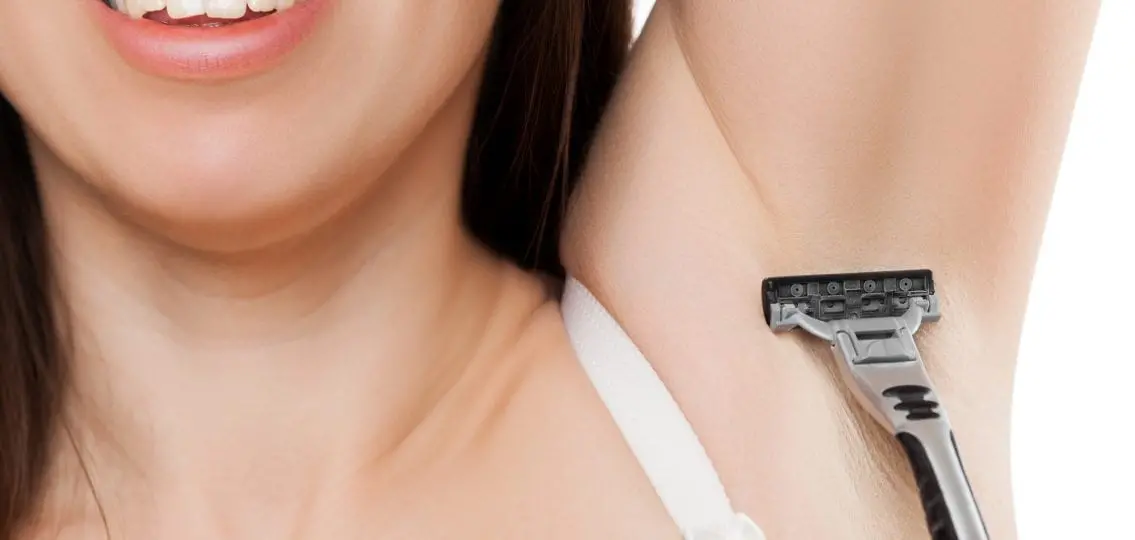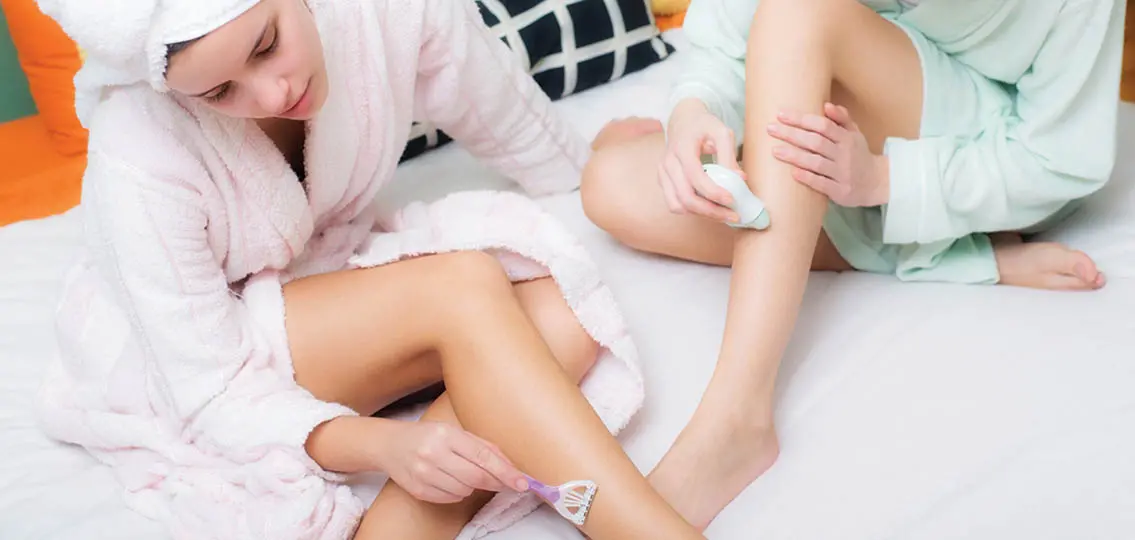During her second week of sixth grade, my daughter came into my room and asked if she could start shaving her legs.

I wasn’t shocked. She was in the throes of puberty, and I noticed her leg hair turning darker and coarser over the summer. I still couldn’t help feeling like it was the end of her childhood, though.
“Are you sure?” I asked. “It’s a commitment.”
“Oh, yes,” she responded without hesitation.
“When and what to shave is a deeply personal decision for adolescent girls,” says Katie Hurley, a licensed clinical social worker and author of No More Mean Girls. “While some girls aren’t bothered by the increased hair growth that can occur with the onset of puberty, others are.”
How to Teach Your Daughter to Shave:
1. Talk it through.
Hurley encourages parents to have an open dialogue about body hair and hair removal with their daughters. “In the absence of clear information, they tend to talk to friends or look for answers online,” she says. Make it easy for your daughter to discuss these topics with you.
“If your daughter comes to you with questions, empathize with her and ask what she thinks about the process. Does she want to shave her legs thigh to ankle or just from the knee down? It’s the natural reaction for parents to want to give specific advice in these moments, but many adolescent girls are searching for options and information,” says Hurley.
In my case, I kicked the question back to my daughter and asked, “Why do you want to start shaving so badly all of a sudden?”
Her reply came out quickly: “I feel like everyone is staring at my legs during gym.”
When I put the ball back in her court, she continued opening up to me about a few other issues beyond shaving, such as body comparison and peer pressure from other girls.
She was ready to shave, and there were no health reasons to make her wait. I just needed to know how to teach this girl to shave.
2. Ensure safety and comfort.
When it’s time to provide some guidance on the how-to’s of hair removal, “parents should establish a plan and make sure their daughter feels safe and comfortable,” says Carly Mentlik, a licensed counselor and founder of Empowering Girls—The Inner Rainbow Project. “Then, it can be included as part of her regular hygiene routine.”
Following this advice, we took a trip to Target the next day and picked out a new razor and some shaving gel. When we returned, I provided her a few safety tips, including showing her how to hold the razor, directing it against the growth, what a dull blade looks like, and what to do if she cuts her leg. I mentioned that some people like electric razors, which can ease anxiety and lower the risk of cuts, but that they also require a lot of patience and trial and error.
3. Discuss next-level shaving.
Sometimes adolescent girls take things a bit too far for their parent’s comfort. Many young tweens are self-conscious about their armpits, pubic region, and even the hair on their arms, knuckles, and toes.
Parents may be tempted to set strict parameters around what hair may be removed, but they should approach the topic with care, says Lisa Leshaw M.S., a clinical mental health counselor. “There are so many rules tween girls are expected to follow,” says Leshaw. “They’re caught smack dab in the middle of childhood and trying to become young adults. We need to encourage and support their decision-making and show them we trust their choices, which in turn builds their self-confidence.”
Part of teaching girls to shave can include parents explaining their misgivings about shaving certain parts of the body—such as risks of ingrown hairs or infection in the delicate pubic area and visibly stubbly regrowth on the arms—but should discuss the full gamut of shaving protocol, even if they would rather their daughter not touch these areas. For example, most doctors recommend using a brand-new, disposable two-blade razor each time the pubic area is shaved so as not to spread bacteria to other parts of the body. Instruct your daughter to go gently and slowly and to try to use a mirror to avoid cuts.
4. Keep talking going forward.
Talking about body hair isn’t a one-and-done discussion once parents have taught their girls how to shave. It’s important for parents to continue having conversations with their daughters about hair removal and ensure they are following healthy practices, including taking care of nicks or cuts, changing out razors regularly, and using the proper supplies.

If she chooses to shave (because not all girls and women do), starting the process can feel like a rite of passage. It’s important that she feels good about it, and that she feels like these decisions are hers. “When they internalize the message that they make these choices about their bodies, they feel empowered to do what feels right for them instead of following the crowd,” says Hurley.




